 Although hydrangea is a southern plant by its origin, some of its species have taken root quite well not only in the middle lane, but also in Siberia. It is clear that in cold climates it needs special care, it is especially important to protect it from frost. So that the plant does not die, it is important to shelter hydrangea for the winter in Siberia, and how to do this, read the article.
Although hydrangea is a southern plant by its origin, some of its species have taken root quite well not only in the middle lane, but also in Siberia. It is clear that in cold climates it needs special care, it is especially important to protect it from frost. So that the plant does not die, it is important to shelter hydrangea for the winter in Siberia, and how to do this, read the article.
Content
Weather features of the region
A long winter period is characteristic of Siberia. Autumn and spring are shorter than in the middle lane. Most precipitation in most areas occurs in the summer months - July and August. Typically, autumn weather sets in late August and ends in October.
In the same period, the growing season for most plants ends. Therefore, at this time, it is necessary to prepare the bush for winter.
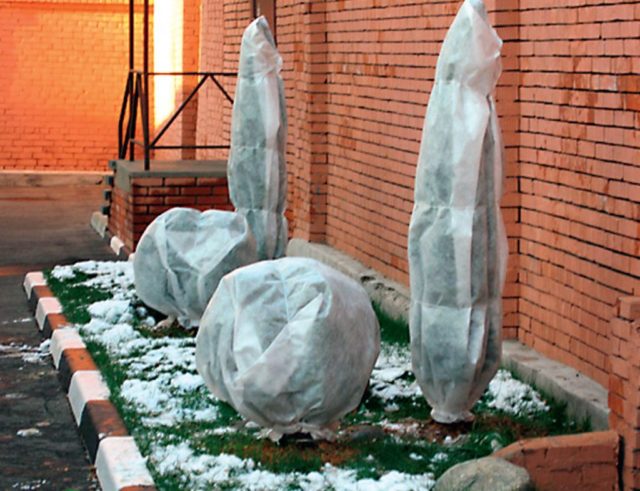
What varieties are suitable for the region?
 In these harsh conditions, paniculate and tree-like hydrangeas have proven themselves well.
In these harsh conditions, paniculate and tree-like hydrangeas have proven themselves well.
They show miracles of "courage", withstands frosts down to -40 degrees.
Large-leaved varieties of hydrangeas, even with good warming, may not tolerate winter.
Therefore, if there is an irresistible desire to see them on your site, you will have to dig them up in the autumn with a lump of land and store until spring in a greenhouse or other utility room.
[sc name = "info-hand" text = "An alternative would be to drop them into bulk containers. Then it is enough to bring them into the room for the winter. But these beautiful flowers will become the decoration of the site in the summer. ”]
But breeders made a gift for gardeners who live in cold climates. Through selection selection, winter-hardy varieties were bred. Their distinctive feature is that they can bloom not only on new shoots, but also last year.
But the most pleasant gift was presented by nature. So in one of the American nurseries there was a natural mutation of large-leaf hydrangea, and she began to give flowers on last year's shoots, they called the new variety “Endless Summer”. It was from him that breeding of winter-hardy varieties began. So now the Siberians will be able to admire the beauty of hydrangea.
Preparing the plant for shelter
Before embarking on a hydrangea shelter for the winter in Siberia, preparatory work is needed.
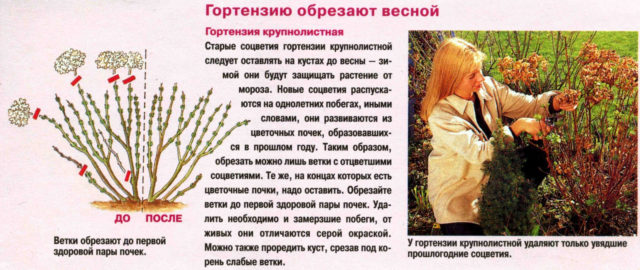
Although hydrangea is a hygrophilous plant during the period when the vegetation ends, it is no longer watered. Do not feed during this period. In the second half of August, you can begin preparations for wintering.
It consists of the following works:
- From the branches of the plant, the foliage is removed in stages. But it is important to remember that the last two leaves that close the flower bud are left. It is from it that a beautiful inflorescence will be formed in the spring.
- Before the first frost, if it rains at this time, it is advisable to cover the bush with a canopy of polyethylene so that the ground remains dry under it.
- For the northern regions, it is better not to cut off old inflorescences, they will become additional protection for the flower bud.
- Perform preventive pruning. For this purpose, thin, non-woody branches are removed, thinning out the heavily overgrown middle of the bush. Cut the old shoots under the root. Whether to deep cut the bush in the fall, every gardener decides. But most gardeners in this region prefer spring pruning.
- The trimmed foliage and shoots are cleaned, the earth around the bush is loosened.
Thus, the bush will be prepared for warming.
Step-by-step video:
Hydrangea Shelter
Since the region of winter is snowy and the snow cover is high, two main methods can be chosen:
Shelter by plant bending, followed by warming
 For this purpose, the branches of the bushes are proportionally distributed into several segments, 5-7 branches each. They are connected, but not very tightly. With the help of auxiliary means, various kinds of fixators are bent to the ground.
For this purpose, the branches of the bushes are proportionally distributed into several segments, 5-7 branches each. They are connected, but not very tightly. With the help of auxiliary means, various kinds of fixators are bent to the ground.
It is better to do this in stages, so that the branches of the plant gradually get used to. The middle of the bush is covered with a pre-prepared mixture: peat, rotted compost, dry leaves.
Top cover with spanbond or other covering material to cover hydrangeas for the winter in Siberia. These works are carried out when the first frosts begin.
In the period before stable cold weather, they are already making major shelters. To do this, under bent branches lay wooden boxes or a good layer of spruce branches. They still pour dry leaves and again lay branches of spruce. Then cover with a spanbond in several layers. In order not to get moisture, they cover with polyethylene. In such conditions, the plant overwinter well.
[sc name = "info-dashed" text = "Another rule that will help the bush to adapt in the spring, do not rush to open it immediately. Do this in stages, so that the plant does not have stress, spring frosts do not freeze it. ”]
Upright wintering, air-dry
 The prepared bush is tied, but not much. Try to choose such ropes so that they do not dig into the branches.
The prepared bush is tied, but not much. Try to choose such ropes so that they do not dig into the branches.
Around the perimeter of the bush, retreating from it 20 centimeters, build a frame. It is made from various auxiliary materials. The easiest way to use metal building mesh.
The root nest is covered, as in the first case, with soil mixed with peat, leaves and decayed humus. Then dry foliage, small chips are poured into the prepared frame.
They wrap the structure in several layers with spanbond, the top is covered with polyethylene, which did not get the plant wet. In winter, in Siberia, the structure will be covered with snow, and the bush will winter in comfortable conditions.
In the case of large-leaf hydrangea, one can only experiment with winter-hardy varieties.
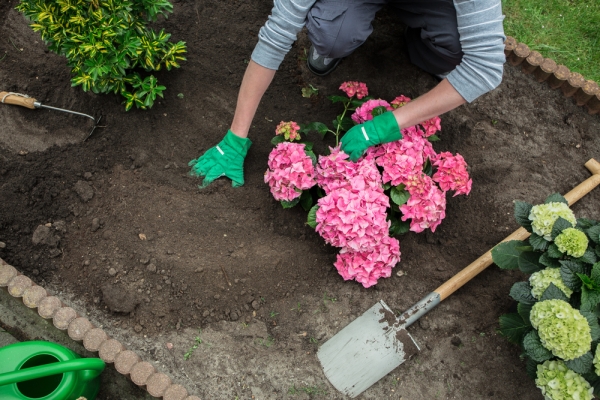
What varieties are recommended for areas of Siberia?
Treelike Hydrangea arborescens
Medium-sized bushes with white inflorescences. Unpretentious, tolerate harsh winters. She is sheltered only in the first years. Thanks to this, all Siberians can admire its flowering in parks and personal plots.
Annabell Tree
A short bush blooms with magnificent pink flowers, which then turn red. This variety is popular among gardeners in Siberia.
Panicled bobo
A low bush is covered with pyramidal large inflorescences of pinkish-white color.
Panicled Hydrangea Pinky Winky
Pinky Winky is an undersized bush, but with a wonderful flowering, the caps are pink below and white top. Needs shelter.
Large Leaf Early Sensation Series
An early sensation, the name is translated, like the Endless Summer series described above, resistant to frost, but shelter (air-dry) is needed. These series include varieties that have worked well. Different colors for the most part spherical flowers with bright foliage will become an ornament for any site.
Petiole or curly hydrangea is quite difficult to take root in Siberian winters. But if she adapts, she will be able to transform the gazebo, fencing, facade of the house. They take it off for the winter, cut it off and cover it just like curly roses, that is, in an air-dry way.
Each gardener has his own methods of how to reliably cover hydrangea for the winter in Siberia.But if you are an amateur or a beginner gardener - you should approach the process carefully. Remember that the flowering of hydrangea depends on how it blooms. Beautiful flowering will be a reward for the labor invested.

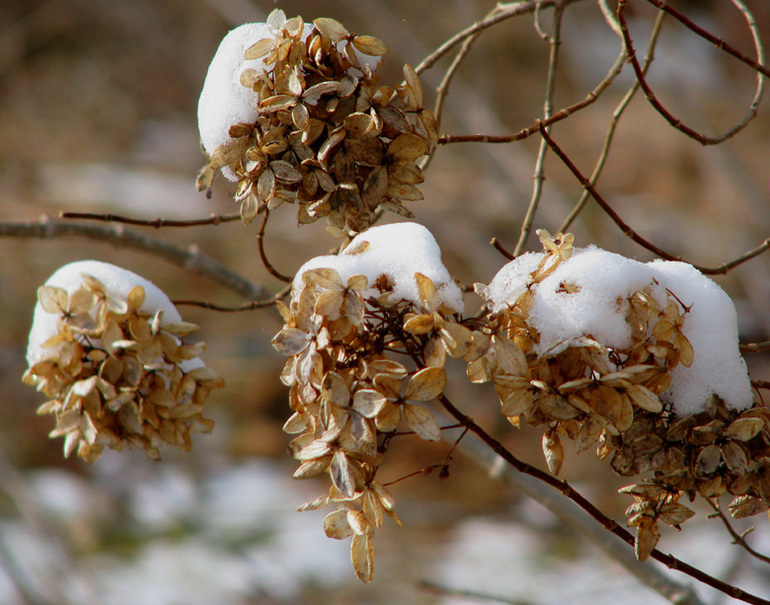
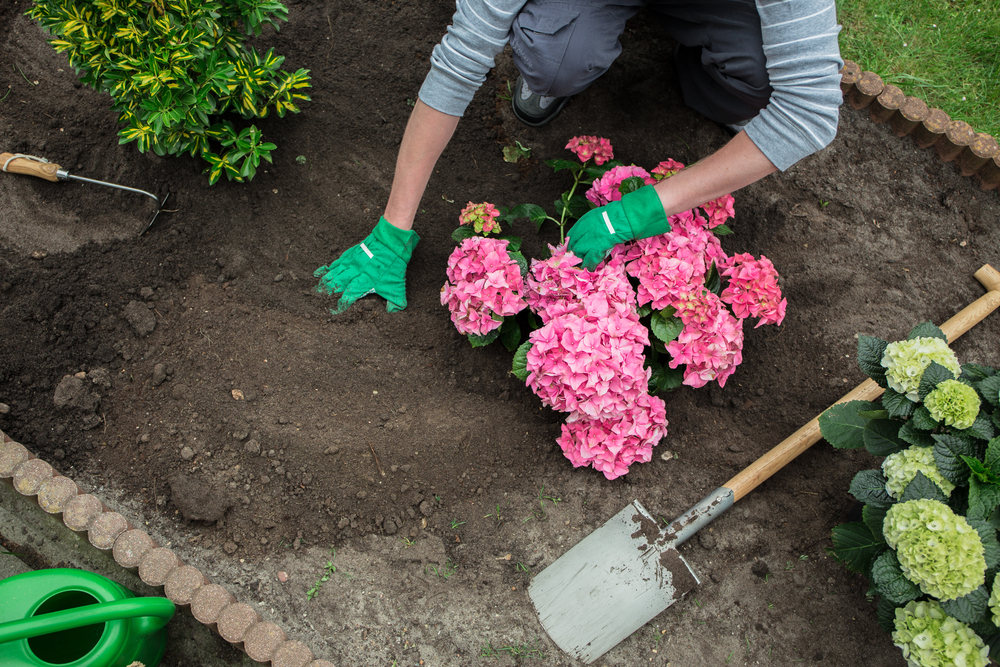

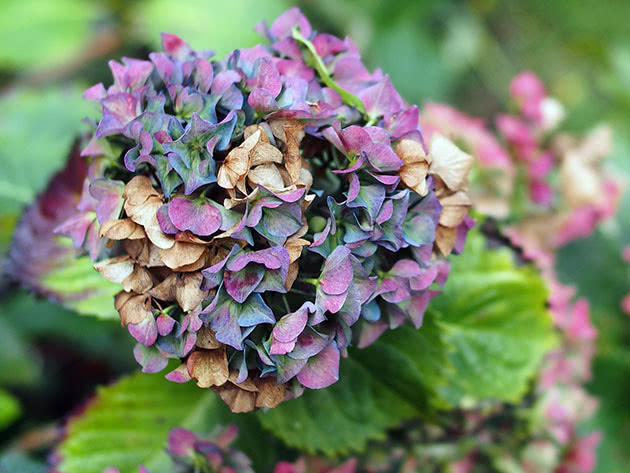 How to propagate hydrangea in the fall: methods, cuttings
How to propagate hydrangea in the fall: methods, cuttings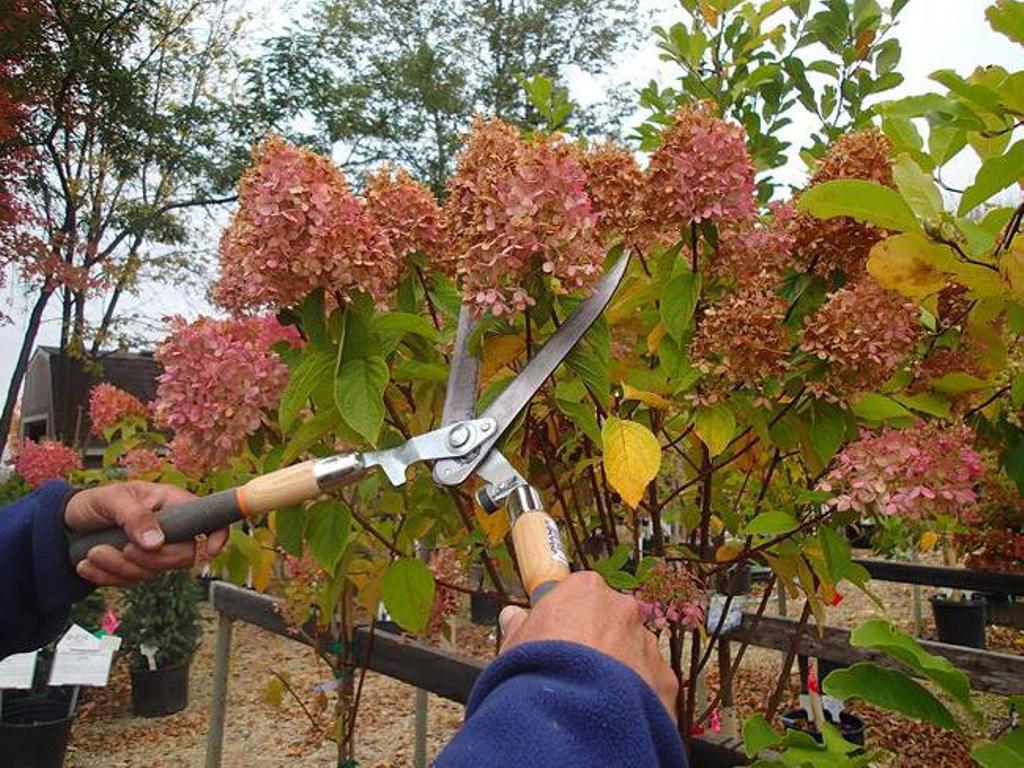 Hydrangea care in the fall and winter preparations
Hydrangea care in the fall and winter preparations How to feed hydrangea for lush flowering
How to feed hydrangea for lush flowering